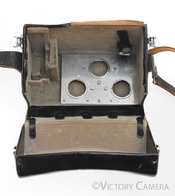Les Sarile
Member
It's interesting that - irrespective of who was actually first - the only camera that ever gave the F a run for it's money was the Canon F1. (And I've used/owned Spotmatics, Minoltas, Ricohs, Leicas, Yashicas, etc.) Canon went directly after the pro market with that camera and did really smart things - like lend sports photographers great big huge glass with their logo on the barrels so you could see "Canon" from the stands of a auto race or football field.
Part of what drove the popularity of the Nikon F was the Viet Nam war. Soldiers in theater saw these cameras around the necks of photojournalists. When they left Viet Nam, they'd often transit through Japan or go there on leave. There they found Nikon all over the place at a very cheap price. I recall looking at Nikon pricing in Hong Kong in the early 1970s that hands down beat anything I could get in the US even when factoring in the cost of shipping.
I have been a Nikon shooter since the 1970s and currently own a Nikkormat Ft, a Nikomat FtN, a pre Apollo F Photomic, an Apollo F Photomic, an F2, and an F3 (well there's the D750 but that's for snapshots). All of them work, all of them have reasonably decent working meters and I have accessories for the Fs like waist level finders and non-metered prisms. Some 60-80 years after they were born, they are still tanks that just work. They need the occasional seal job and/or CLA but that's about it. Oh, and bonus, the AI/AIS lenses are similarly built to last and work just fine on my D750 (who needs autofocus). THAT is why Nikon won and won big - Never obsoleting their mount and building things for constant hammering by pros. Even in their new Z digitals, they have an adapter ring to let these old lenses live another generation (I think, I've read, I don't own a Z). You buy a camera, you invest in glass.
I will say that, after the F3, I lost interest. The F4-5-6 were just digital cameras in film drag with too much weight and too many gadgets and features to be of much interest, at least to me. I also don't think they were anywhere near as durable as the prior models. Although I've shot the vast majority of my 35mm stuff on F bodies, I'd have to say that the very best camera of that generation was the F2 which is just a superb instrument. The F3 comes close but they used a stupid little LED to display cameras settings that I hate so hard.
That said, the tragedy is that I shoot very little small format with 120/4x5 being my default. But I do make sure to shoot every camera in my stable - including the Nikons - once or twice a year.,
The Canon F-1 competed directly with the Nikon F2. I don't think Canon and Nikon's model releases and dates were mere coincidence.
 Selection 43 by Les DMess, on Flickr
Selection 43 by Les DMess, on FlickrSeems most have forgotten that Canon's first slr was the Canonflex. I didn't pursue it much but I can't seem to find anything on what Canon released with this model and wondered if anyone else did? I can't imagine that Canon didn't have the resources to provide a more appropriate rollout like Nikon did.









